You did it! You’re opening a home bakery.
It takes a lot of guts to go from dream to action. Whether you’re looking for a side gig or pursuing a baking passion, we applaud your entrepreneurial spirit.
You already know the statistics. You’ve heard that many businesses fail in their first year of operation.
But that’s why you are here.
Before you dive into how to build a home-based food business, you need a robust home bakery business plan. So that you can set yourself apart from those statistics.
In combination with your creativity, it will give your home bakery direction and structure. It will chart a clear path to its success.
Read on as we give you a rundown on how to write a business plan for a successful home-bakery business.
Why Do You Need to Write a Home Bakery Business Plan?
You might be thinking, okay, but do I need to write a business plan, even if my bakery doesn’t have a storefront? Who’s even going to read this thing?
The answer is yes, you need one. At the very least you’ll read it (and often might I say).
It will be the master recipe to all your recipes. And if you craft it with as much diligence as you make your burek and tarts, you’ll already be ahead of the competition.
Here’s why:
- You might want to secure funding. Whether you seek investors, bank loans and grants, or crowdfunding, you’ll have to present one. It will help you pitch your business idea and translate it into actionable steps.
- You need to articulate your business idea. Putting your vision on paper is different from mulling it over in your head. It will help you identify where a business opportunity lies.
- You want to outline how to take your bakery from the idea stage to a thriving home-based business. It will be your map to success that you’ll often refer to as you progress through each step.
- It will provide you with an inventory of resources needed to make this delicious craft into a flourishing business.
- It will help you identify potential challenges and chart out solutions, ahead of time. It takes a fair bit of risk out of early-stage entrepreneurship.
What Are the Essential Elements of a Home Bakery Business Plan?
Okay, now you’re thinking how great it will be to have a roadmap for your home bakery business (told ya’).
Let’s look at the essential home bakery business plan elements. So that you can have a master-master recipe for all your recipes (okay, you get it).
-
Executive Summary: a snapshot of the business, covering offerings, target market, competitive strategy, pricing, marketing approach, operational requirements, financial projections, and risk mitigation.
-
Business Overview: outlines core elements, including the niche in artisan baked goods, legal structure, vision, mission, team composition, and short-term and long-term goals, offering a detailed description of the home-based bakery.
-
Market Analysis: a comprehensive examination of the bakery business’ competitive landscape, target audience, competitor profiles, strategies, pricing, strengths, weaknesses, target customers, bakery market overview, and a SWOT analysis to anticipate challenges.
-
Bakery Products and Services: showcases the variety of products, emphasizing details such as ingredients, unique selling points, packaging, labeling, ordering processes, delivery times, and special services, providing a comprehensive overview of its offerings.
-
Sales and Marketing Strategy: outlines the marketing strategy, focusing on communicating its unique selling proposition, branding, and engaging promotional tactics through various mediums tailored to reach the identified target market.
-
Operations Plan: provides a concise guide to Sweet Delights’ streamlined operations, covering production processes, inventory management, supplier relationships, facilities, equipment, shipping, and distribution options, ensuring transparency in day-to-day activities.
-
Financial Projections: addresses upfront expenses, operating costs, sales goals, and profit targets, emphasizing the importance of considering licenses, equipment, ingredients, packaging, and marketing expenses. The financial plan includes income statements, cash flow statements, and balance sheets for a comprehensive financial outlook.
Executive Summary
An executive summary might sound intimidating. But don’t fret.
It’s the last section you will write. It will tie together all the following pieces, that you will do first. Which you will then introduce here.
By the time you finish writing the rest of the sections, you’ll be ready. Ready to crown them with a clear snapshot of your home-based bakery business.
Here are the questions your executive summary should answer:
- What is the business idea and what products or services will the home-bakery offer?
- Who is the target market and what is the size of the market?
- What is the competitive landscape? And how will the home bakery differentiate itself from competitors?
- What is the pricing strategy and how will the home bakery ensure profitability?
- What is the marketing and sales strategy and how will the home bakery reach its target market?
- What are the operational requirements? And how will the home bakery ensure the quality and consistency of its products?
- What are the financial projections and what is the expected return on investment?
- What are the risks and challenges associated with the home bakery business? And how will you mitigate them?
A short sample would look like this:
Our home bakery, Sweet Delights, will offer fresh and high-quality baked goods to individuals and families who appreciate personalized and customizable options. We will differentiate ourselves through efficient operations and cost management. Our marketing and sales strategy will focus on social media, word-of-mouth referrals, and participation in local events and markets. We will ensure the quality and consistency of our products by using only the freshest and highest-quality ingredients. Our financial projections show a steady increase in revenue over the first three years, with a return on investment of 20%. The main risks and challenges associated with our business include competition from other local bakeries and managing inventory and supplies. We plan to mitigate this through unique and customizable products and an efficient inventory management system.
Business Overview
This is the core of your entrepreneurial dream. The part that kept you up at night, or glued to your screen, as you researched your business idea. This is the flour to your bread and the lemon to your meringue pie.
The business overview is a detailed description of your unique home-based bakery business.

Here are its main elements:
- Outline what sets your home bakery apart from its competition: What is your niche? Will you be specializing in artisan bread, gourmet cakes, and cookies? You can identify your niche by the events you will serve. Or the special ingredients you will focus on, and the styles of cakes. The opportunities are bountiful.
- Outline the legal structure: Is your business a sole proprietorship, an LLC, a partnership, or a corporation? Here you will describe its business model and business structure.
- Outline the vision and mission: What is the purpose of your business? What are you seeking to achieve with it? Answering these questions in mission and vision statements requires careful reflection.
- Outline your team: Is it a one-man or woman job, or will you have hired staff? Discuss the number of personnel needed, their compensation, and qualifications. And, of course, introduce the visionary behind it all: yourself of course.
- Outline your short-term and long-term goals: This is a numbers game. Discuss your growth plan. Back it up with measurable and quantifiable objectives, and a clear timeline.
Market Analysis
How will you know there is a demand for your baked products and that the market is not already saturated with them?
Don’t worry, that is where a deep and well-researched market analysis comes in.
It will tell you how realizable your business idea is, and, if necessary, help you adjust it.
It consists of both a competitor analysis and an audience and market analysis.
It is your chance to get a good sneak peek into what other bakeries are doing. How are you differentiated from them, and what is your unique value?
It is also a window into who your audience and customers will be, and what needs and wants you will fulfill for them.
Here is how to conduct a competitor analysis:
- Identify your competitors: Use search engines, social media, and AI to research your competitors. Your competitors are those that offer products and services in proximity to yours.
- Identify competitor strategies: What are the strategies your competitors use to reach their target customers and achieve their goals? This research entails looking into their marketing tactics and their unique value.
- Identify competitor price ranges: Investigate how they’ve priced their products. So you can get a better idea of what you should be charging in the future to ensure profitability.
- Identify competitor strengths and weaknesses: Dive in deep to create competitor profiles by answering the following questions
- What key products or services do your competitors offer?
- Who is their target market and what is the size of the market?
- What are their operational requirements? How do they ensure the quality and consistency of their products or services?
- What are their financial projections and what is their expected return on investment?
- What are the strengths and weaknesses of their design and technical capability? What is their experience in international projects and financial capacity?
- What are the risks and challenges associated with their business? How do they mitigate them?
Here is what an audience and market analysis should consist of:
- Identify your target customers: Who are your people, what do they want, and why? This is your tribe, so you should learn as much as possible about them. Build a consumer profile that will include their demographics, buying habits, and preferences. You can collect the data through surveys, interviews, product trials, or by researching your competitors’ customers (work smart not hard am I right?).
- Overview of the market: You need a snapshot of the bakery market to gauge the regulatory requirements, growth opportunities, and capital availability. Conduct research into the market size and share, barriers to entry, industry trends, and forecasts. Government and industry associations are great sources of data.
- Do a SWOT analysis: Analyzing your home bakery’s strengths, weaknesses, opportunities, and threats will keep the dream alive. By anticipating challenges and strategically addressing them ahead of time, you leave more leeway to turn your innovative ideas into opportunities.
Bakery Products and Services
The yummy part-your baked goods!
This is where you will list the products you will offer, sharing your first menu.
Be as detailed as possible. Let your baking juices flow here.
Whether it’s bagels, cakes, pretzels, breads, cookies, pies, tarts, include information about their ingredients, calories, portion sizes, weight, etc.
Develop and leverage the unique selling point (USP) of your home bakery here.
Your USP can be anything that makes you stand out. Is it your cake-decorating style? Or your French pastry specialization? Or that you only bake vegan goodies?
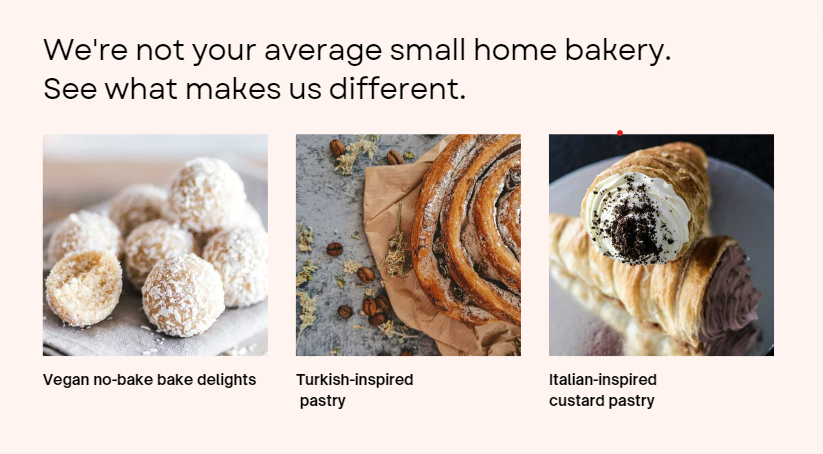
This is also where you should detail the packaging, labeling, ordering process, and delivery times. And if you plan on offering special services, such as customizations, be sure to outline what that entails.
Sales and Marketing Strategy
You have the skills, work ethic, and creativity baked into your goods. But how will you market and advertise them?
Your marketing strategy should contextualize the previously conducted market research. And aim for the identified target market while tailoring the messaging accordingly.
Then, consider what mediums you would like to use.
Do you want to use Facebook ads and groups? Will you also incorporate the brick-and-mortar local farmer’s markets and food festivals? How about email marketing?
The choices of marketing strategies are abundant.
Your marketing strategy should do the following:
- Communicate your USP to your target audience.
- Communicate your branding (logo, tagline, business name).
- Plan for frequent promotional and advertising tactics to engage your customers.
Operation Plan
This is the how-to part of your home bakery entrepreneurial dream! Streamlined and lean operations make all the difference between a business dream and a reality.
An operations plan should address the following aspects:
- Production: Detail your production so that there is full transparency about your baking and packaging processes. What will you be making and what will you use pre-made? How long will it take you to turn raw into finished baked goods?
- Inventory: How many raw and how many finished ingredients will you store, how, and how will you track them? How will you handle waste?
- Suppliers: List who your suppliers will be, what type of supplies you will get from them, and where they will be produced.
- Facilities and equipment: Describe the space in which you will operate, and the kitchen requirements needed. Will you have a dedicated kitchen, or will you work in a home kitchen adjusted to your bakery’s needs? You should outline what technology and equipment your production will entail, for sanitary and regulatory reasons.
- Shipping: Describe if you will be filling your orders yourself or using a third party. List the shipping timelines and pickup/drop-off options.
- Distribution: List what distribution options you intend to use. While you have the option of selling to your target customers via your physical premises, own website, or 3rd party retailer, FreshFind takes the guesswork out of this process. So, we have you set!
Financial Projections
How will you afford to set up your business? How much can you and will you make?
Don’t worry, we’ll break down the nitty gritty financial details here.
First off, you need to consider your up-front expenses. Do you need to invest into relevant licenses and equipment, and how much?
Now that we covered that part, how much will your operating expenses be? Think ingredients, packaging, marketing, and advertising.
Phew. Okay, now to the good stuff (no, not the muffins yet).
Set your sales goals. This involves setting the time you can commit, the number of products you aim to sell, and the customers you intend to reach at your set prices.
Once you have that figured out, you can tinker with the numbers to set a profit goal (yay!).
Your financial plan should include the income statement, the cash flow statement, and balance sheet.
The Next Step in Your New Home Bakery Business Journey
Congratulations! We’re proud of you.
The fact you’ve made it this far means you’re dedicated to not just planning your new home bakery business, but to getting it successfully off the ground.
And we got you from here on out too!
You’ve spilled your guts (err business dreams) on paper, curated a menu, outlined your operational plans, and conducted a financial forecast (look at you!). Your summary looks shiny and mighty.
You’re ready to act.
And FreshFind is waiting for you on the other side.
We will help you list and sell your scrumptious baked goodies on our e-marketplace. And connect you to various distribution channels within our network.
This is our dream for you. We’re champions of community power. And we can’t wait to host you!
FreshFind is your go to free eCommerce tool, built for home-based food makers. Check us out today and excel your business to the next level.

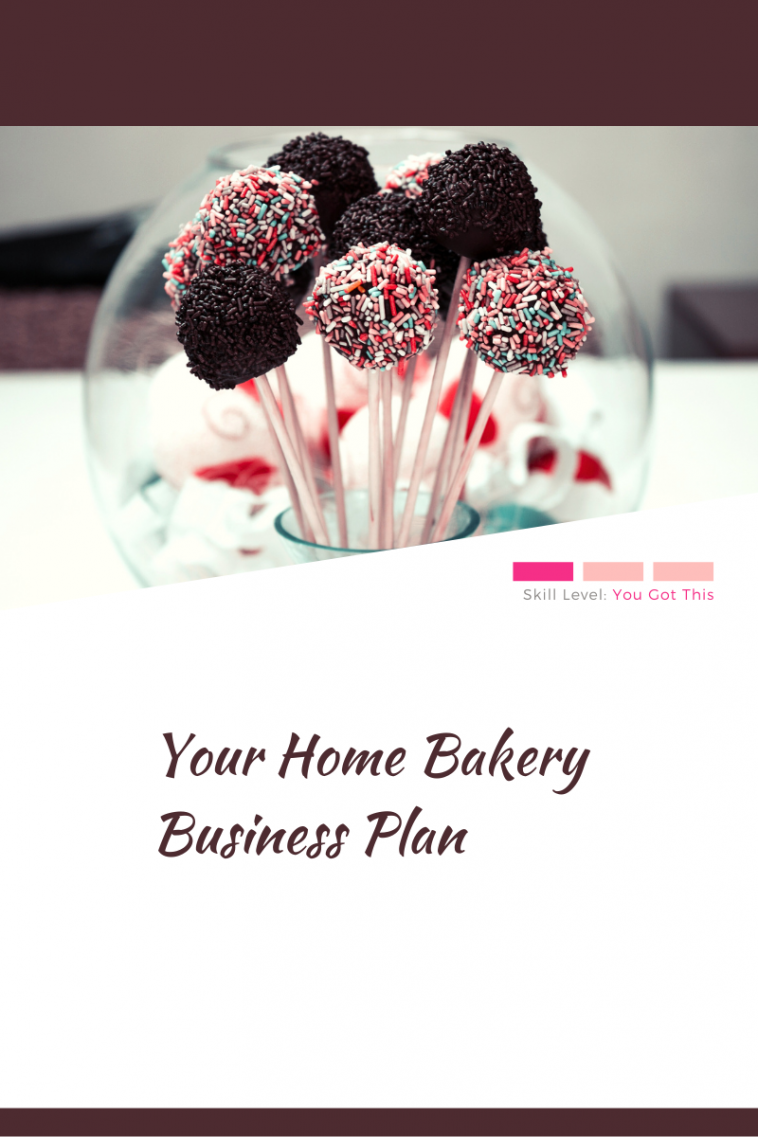

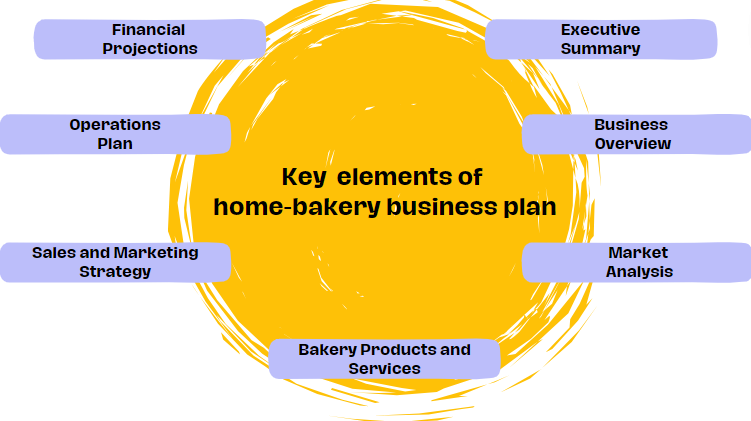
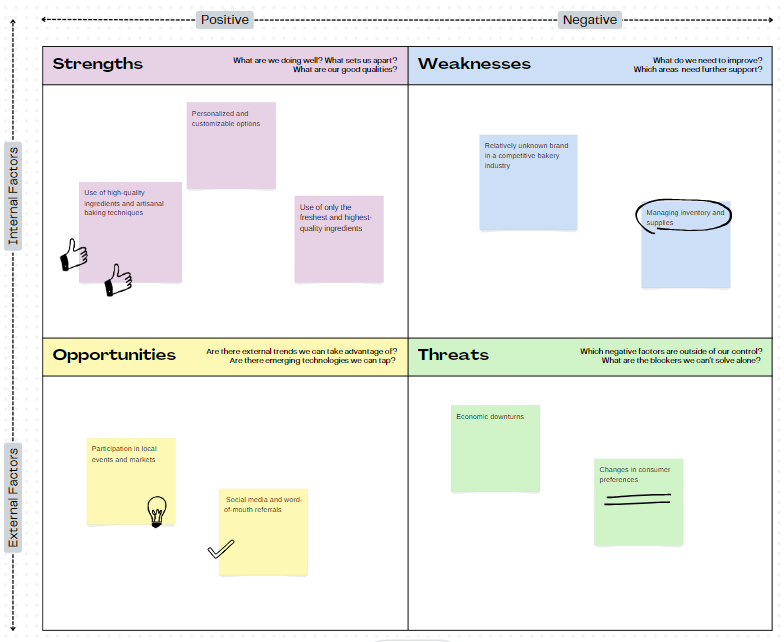
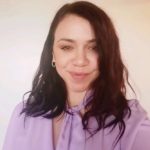


GIPHY App Key not set. Please check settings